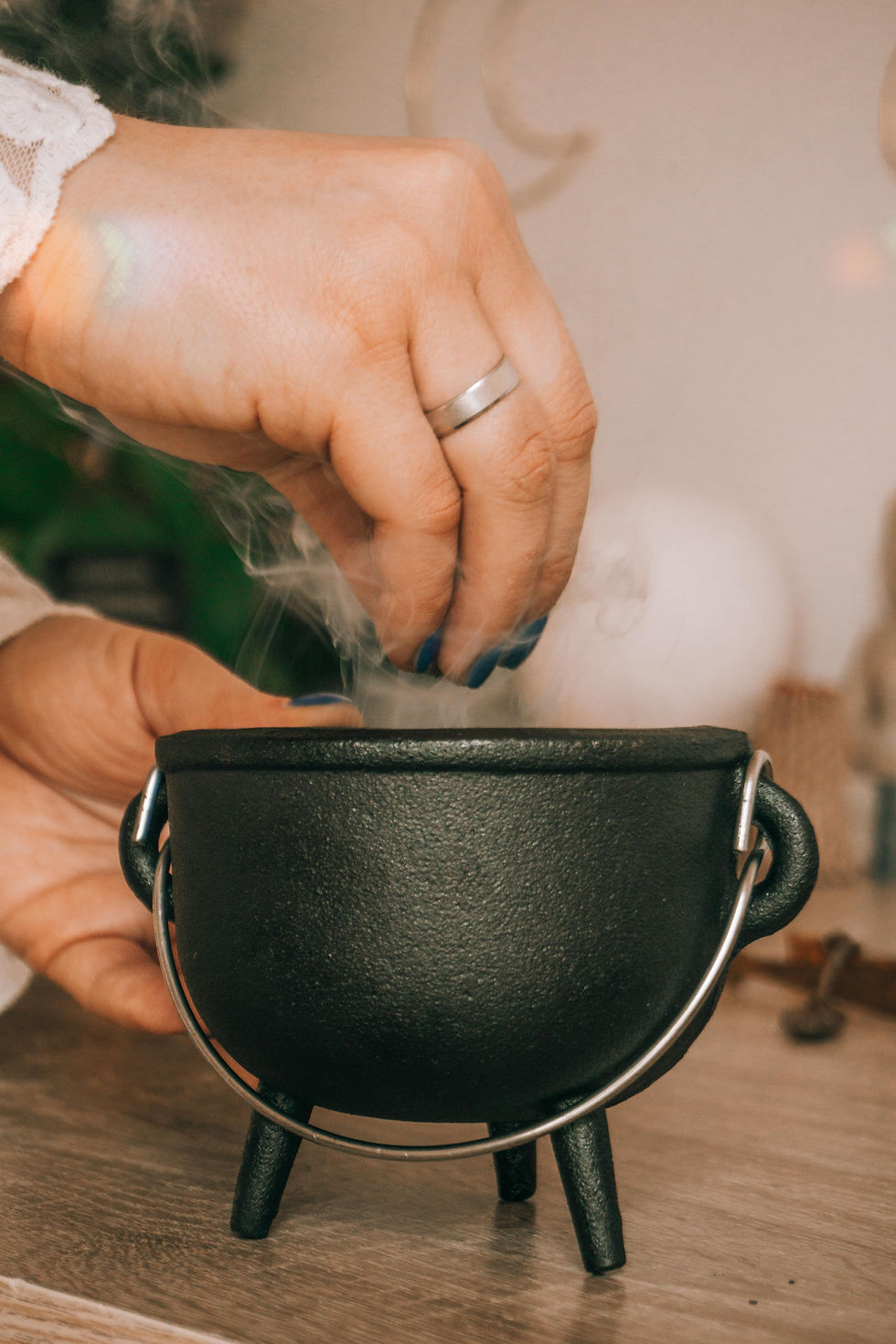The Science of… Halloween: #1 Potent Potions
- Lit Lab
- Oct 5
- 3 min read

Welcome to our Halloween-themed science blog!
It’s Halloween season, so throughout October we’re untangling science from superstition each week with a blog exploring everything from potent potions to creepy creatures - and even eerie experiments you can try at home.
Check back each week during October to see what science is brewing behind the magic!
#1 Potent Potions
From witches’ brews to love potions, Halloween is full of chemistry disguised as magic.
These mysterious drinks could heal, hex, or make someone fall in love. But many of the herbs used — like belladonna, mandrake, or even garlic — are packed with real bioactive chemicals – in other words, they were actually early pharmacology.
Everyday kitchen herbs like garlic and ginger have long been used in folk remedies and are packed with real pharmacological power. Modern studies show garlic’s active compound allicin has antimicrobial properties that help fight bacteria and give cardiovascular benefits. Ginger which is rich in gingerol calms nausea and reduces inflammation and Aloe vera, often used in beauty rituals, contains polysaccharides that speed skin repair.
But though these humble herbs and plants stand up to modern testing, many of the herbs used in ye olde times were far from harmless.

Introducing the tropane alkaloids. These are a family of naturally occurring compounds found mainly in plants of the Solanaceae (nightshade) family — including Atropa belladonna (deadly nightshade) an favourite in old European potions and said to help witches fly, while Hyoscyamus niger (henbane), and Mandragora officinarum (mandrake) were both used in love potions and sleep draughts.
The key active compounds in these plants — atropine, scopolamine, and hyoscyamine — all affect the neurotransmitter acetylcholine.
Normally, acetylcholine acts as a chemical messenger that helps your brain and body communicate. It’s vital for muscle movement, memory and learning and regulating the parasympathetic nervous system (the “rest and digest” functions).
Tropane alkaloid containing plants block acetylcholine by binding to muscarinic acetylcholine receptors (mAChRs) — but without activating them.
This means the alkaloids act as competitive antagonists, preventing acetylcholine from sending its usual “slow down and relax” messages until everything feels strange, dreamlike, or dangerous.
In high doses, this can cause “anticholinergic syndrome” which presents with severe agitation, hallucinations, or coma. However, in smaller, controlled doses, these same chemicals are useful medicines — atropine is used in medicine today to treat bradycardia (slow heart rate), and scopolamine treats motion sickness and nausea.
These strong central nervous system effects, which can induce vivid dream states, time distortion, and memory gaps might explain why potion drinkers genuinely felt enchanted or cursed - sensations later mythologised as “sorcery.” So while ancient herbalists didn’t know about neurotransmitters —they knew these roots did something.
For many cultures, “potion-making” is part of a deeper story too — of herbal wisdom, resilience, and self-care long before formal medicine was accessible. Yet those same practices were often demonised or called “witchcraft.” Modern labs continue to explore these same “potion” compounds for new drugs and cosmetics. The cauldron has just been replaced by a centrifuge.
Understanding the science behind ancestral remedies helps separate myth from method, helps us understand which traditional herbs — from hair oils to herbal teas— genuinely work (and which don’t) and most importantly empowers us to make safe, evidence-based DIY beauty and wellness choices.
Do you have any remedies or “family potions” passed down in your community?
Share your stories in the comments or tag us on socials @LitLabLondon — let’s see which belong in the lab, and which stay in the cauldron.
Looking for more spooky science fun?
Join us this Halloween and enjoy enough shots to wake the dead at the Lit Lab: Halloween Special on Sun, 26 Oct at Aquum, Clapham
Sources:
Espinoza, T., Valencia, E., Albarrán, M., Díaz, D., Quevedo, R., Díaz, O. and Bastías, J. (2020). Garlic (Allium sativum L) and Its beneficial properties for health: A Review. Agroindustrial Science, 10(1), pp.103–115. doi:https://doi.org/10.17268/agroind.sci.2020.01.14.
Fatur, K. (2020). ‘Hexing Herbs’ in Ethnobotanical Perspective: A Historical Review of the Uses of Anticholinergic Solanaceae Plants in Europe. Economic Botany, 74(2), pp.140–158. doi:https://doi.org/10.1007/s12231-020-09498-w.
Monadi, T., Azadbakht, M., Ahmadi, A. and Chabra, A. (2021). A Comprehensive Review on the Ethnopharmacology, Phytochemistry, Pharmacology, and Toxicology of the Mandragora Genus; from Folk Medicine to Modern Medicine. Current Pharmaceutical Design, 27(34), pp.3609–3637. doi:https://doi.org/10.2174/1381612827666210203143445.
Yang, N., Guo, J., Zhang, J., Gao, S., Xiang, Q., Wen, J., Huang, Y., Rao, C. and Chen, Y. (2024). A toxicological review of alkaloids. Drug and chemical toxicology, [online] 47(6), pp.1267–1281. doi:https://doi.org/10.1080/01480545.2024.2326051.
Zhang, M., Zhao, R., Wang, D., Wang, L., Zhang, Q., Wei, S., Lu, F., Peng, W. and Wu, C. (2020). Ginger ( Zingiber officinale Rosc.) and its bioactive components are potential resources for health beneficial agents. Phytotherapy Research. doi:https://doi.org/10.1002/ptr.6858.

Comments